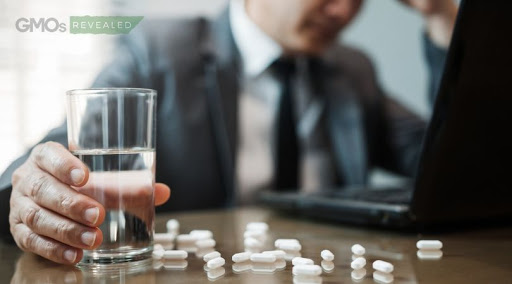Biblical Medicine
But Not Just Christian For Readers
Frankincense (
Boswellia species, various) is now well known as a holistic remedy, having positive action against a number of conditions, up to and NOT excluding cancer itself!
This piece is about its gentler, less well-known companion: myrrh. We all know the story of the Magi, travelling from afar, bringing gold, frankincense and myrrh.
It’s actually pre-Christian, so we can all share!
All three substances have significant health properties. Yes, even gold. It’s used homeopathically as
aurum met. and it is good for cardiac arrhythmias.
Myrrh is a resin that comes from trees belonging to the genus Commiphora, notably
Commophora molmol, which grow in Northern Africa and the Middle East. The sap-like substance, which has a unique sweet and smoky aroma, has a wide range of uses.
Myrrh resin
Here are some notes from the Department of Medical Parasitology, Faculty of Medicine King Abdul Aziz University, Jeddah, Saudi Arabia.
The origins of myrrh and frankincense are traced to the Arabian Peninsula. According to Greek historian Herodotus (5th century BC): "Arabia is the only country which produces frankincense, myrrh, cassia, and cinnamon… the trees bearing the frankincense are guarded by winged serpents of small size and various colors."
Diodorus Siculus, in the second half of the first century BC, wrote that "all of Arabia exudes a most delicate fragrance; even the seamen passing by Arabia can smell the strong fragrance that gives health and vigor."
He also mentioned gold mines so pure that no smelting was necessary!
The frankincense trade route, with transport by donkeys and later by camel caravans, reached Jerusalem and Egypt from the Dhofar region of what is today Oman, through Yemen, turning north to follow the Red Sea coast.
It is likely that the same or similar species of the resin-bearing plants grew across the Red Sea in the area that is now Somalia and Ethiopia, while the collection of the gum resins was initiated in Arabia.
As an aside, I have long written that the actual ORIGIN of the so-called “Spice Route” was actually in modern-day Sri Lanka. That’s where cinnamon was grown in ancient times and not Arabia, as Herodotus mistakenly reported (he never went as far as Sri Lanka, the head of the trail). From Sri Lanka—which the Arabs called Serendib, giving us our word serendipity—supplies went up the Arabian gulf and ashore in eastern Arabia.
Myrrh And Human Welfare
Myrrh contributed much historically in human welfare. Schistosomiasis was known in ancient Egypt since remote times. It affects over 200 million people in 74 countries and territories worldwide (WHO, 1999) causing several chronic complications. A characteristic symptom, haematuria (blood in the urine) with urinary bladder disturbances was mentioned in four Papyrus papers dated back to 1950-1900 BC, and Schistosoma eggs were detected in a cirrhotic liver of a mummy from 1200 BC (Ruffer, 1910).
Also, Fasciola eggs (liver fluke) were detected in a mummy. Flukes infect over 17 million people worldwide causing marked morbidity and mortality.
Treatment of fascioliasis required high or drug multiple doses often with unpleasant side-effect (Farid et al., 1990). In schistosomiasis, praziquantel (PZQ) in use for more than 20 years but was not very effective and was accompanied by potentially severe side-effects.
Well, it turns out that Myrrh and 200 related species does better, has almost no side-effects and is rather cheaper!
Myrrh acts as a natural remedy to treat pain, skin infections, inflammatory conditions, diarrhea, and periodontal diseases. In more recent history, products derived from Myrrh and various other species of Commiphora are becoming recognized as possessing significant antiseptic, anesthetic, anti-parasitic and antitumor properties.
So, the ancients were getting it right!
Very recently, studies have focused on applying clinical trial methodologies to validate its use as an anti-cancer therapy, an antiparasitic agent, and as an adjunct in healing wounds.1
Liver Protection
A study published in the journal
Food and Chemical Toxicology found that myrrh emulsion was able to protect against lead (PbAc)-induced hepatotoxicity.
The authors of the study concluded that myrrh (Commiphora molmol) emulsion is a "powerful antioxidant" that can "protect against lead acetate-induced hepatic oxidative damage and immunotoxicity by reducing lipid peroxidation and enhancing the antioxidant and immune defense mechanisms.2
Antioxidants are thought to help neutralize oxidative stress in the body that is caused by environmental pressures, such as pollution, and other factors.
Generally, our livers need all the help they can get in this toxic day and age.
Cosmetic Value
A study from 2007 in France examined the impact of two types of antioxidant on sebum (a skin compound) and the effect of UV (sun) irradiation. The first type was free radical scavenger (BHT (butyl hydroxyl toluene if you are interested) plus an olive extract. The second type was the essential oil of Myrrh.
The results showed that Myrrh was the most effective in blocking the unhealthy decomposition of sebum, called squalene peroxidation. As a result, the researchers called for sun care cosmetics to include this and similar compounds.
Possible Anticancer Properties
A group of Chinese researchers revealed that extracts and compounds from Myrrh resin may be effective against human gynecologic cancer cells. Their findings were published in the Journal of Medicinal Plants Research.3
Inflammation
Pain is inflammation.
Myrrh has long been used in parts of Asia as a traditional medicine for inflammatory diseases. In 2015, researchers published results of a rodent study indicating that it may help treat inflammation linked to rheumatoid arthritis (RA).4
In 2017, scientists published results suggesting that frankincense and myrrh might help relieve neuropathic pain, following positive results when treating pain in mice with a water extraction of frankincense and myrrh.5
A Very Special Place
Have you heard of “The Land Of Frankincense" Dhofar, in Oman, a UNESCO World Heritage Site?
Harvesting the precious resin in an annual event in March and now thousands of visitors go each year. Myrrh has been grown here too, since ancient times.
At the height of the Roman Empire, Dhofar was exporting immense quantities of frankincense, myrrh and other oils, by ship to Yemen and thence up the Red Sea, and by camel caravan overland to Petra and the Mediterranean. Astride that caravan route, at the southern edge of the vast Empty Quarter, lies the fabled port of Ubar, lost in the desert for over 1,500 years and rediscovered less than 20 years ago by a team led by British explorer Sir Ranulph Fiennes.
See? A pain-free visit, even for non-Christians!
Your Wide-ranging Journalist Doctor Friend… Ha ha!









